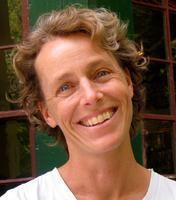Name Kate Brown | Role Author | |
 | ||
Awards Guggenheim Fellowship for Humanities, US & Canada Books Plutopia: Nuclear Families, A Biography of No Place, How Green Is Your Class?: O, Secondary Starters and Plen, The Citizenship Teacher's | ||
Fellow spotlight kate brown
Kate Brown is a Professor of History at University of Maryland, Baltimore County and a 2009 Guggenheim Fellow. She is the author of A Biography of No Place (Harvard 2004), which won the American Historical Association’s International European History Prize for the Best Book. Brown’s most recent book is Plutopia, a history of the world’s first two American and Soviet “plutonium cities”, (Richland, Washington and Ozersk, Russia), published by Oxford University Press in 2013. These were the first two cities in the world to produce plutonium for use in cold war atomic bombs. Brown is currently working on a book called Being There, which explores the history of blighted communities which have been “silenced or destroyed”. Brown has received many research grants and written many articles.
Contents
- Fellow spotlight kate brown
- Pirate television the great soviet american plutonium disasters with kate brown
- Plutopia
- References
Pirate television the great soviet american plutonium disasters with kate brown
Plutopia
Richland, Washington was the first city established to support plutonium production at the nearby Hanford nuclear site, to power the American nuclear weapons arsenals. Ozersk, Russia supported plutonium production to power the Soviet nuclear arsenals at the Mayak nuclear plant. These were the first two cities in the world to produce plutonium for use in cold war atomic bombs.
In the 2013 book on a history of these two cities, Plutopia: Nuclear Families, Atomic Cities, and the Great Soviet and American Plutonium Disasters (Oxford), for which she was awarded the John H. Dunning Prize, Kate Brown explores the health of affected citizens in both the United States and Russia, and the “slow-motion disasters” that still threaten the environments where the plants are located. According to Brown, the plants at Hanford and Mayak, over a period of four decades, “both released more than 200 million curies of radioactive isotopes into the surrounding environment -- twice the amount expelled in the Chernobyl disaster in each instance”.
Brown says that most of this radioactive contamination over the years at Hanford and Mayak were part of normal operations, but unforeseen accidents did occur and plant management kept this secret, as the pollution continued unabated. Even today, as pollution threats to health and the environment persist, the government keeps knowledge about the associated risks from the public.
